Also known as Ewam Monastery (E waM Gonpa) or Yanweng Monastery (Yan weng Gonpa), Chakra Monastery belongs to the Nyingma tradition of Tibetan Buddhism. It was founded by Tse Sa Lama – Sherab Gyatso between approximately 1187 and 1200 CE.
The name of the monastery originates from the phrase “gnam la e dang sa la waM yig tshang ba’i gnas.” Currently, the monastery houses around 90 resident monks and student monks.
It is located in the southern part of Dege County, near the Jinsha River — the natural boundary with the Tibet Autonomous Region — nestled in a mountain hollow close to the summit. It is about 35 kilometers from the county seat of Dege and is accessible by road and connected to electricity.
Chakra Monastery is an important Nyingma monastery in the Kham region and serves as a branch of the renowned Pelyul Monastery located in Baiyu County.
In summer, the area is lush with green grass and blooming flowers, offering breathtaking scenery and a serene environment. It is a sacred site for the practice of Dzogchen and Vajrayana teachings, making it not only a spiritual center for the study of both exoteric and esoteric Buddhism but also a wonderful destination for sightseeing and tourism.
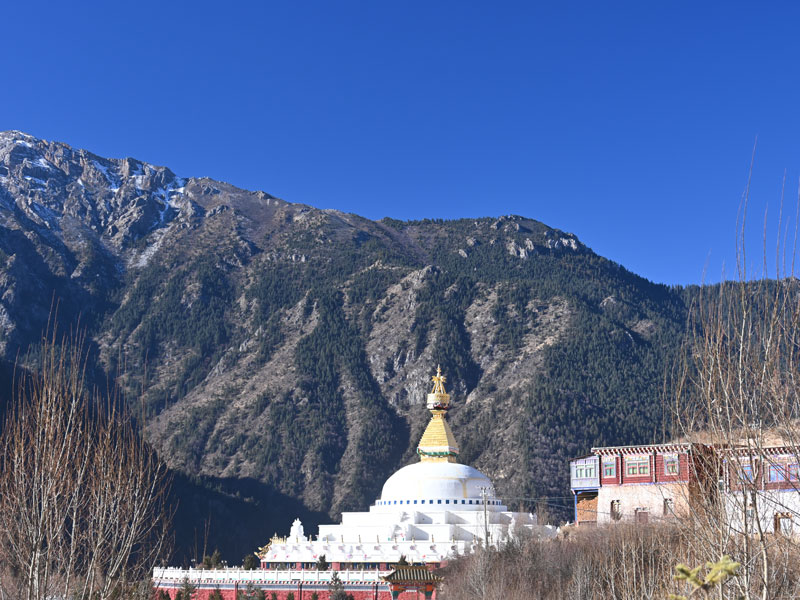
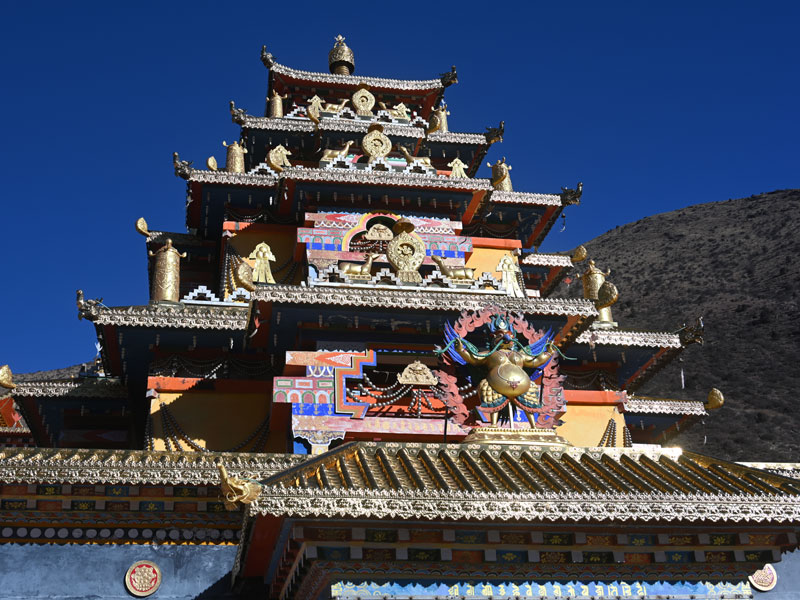
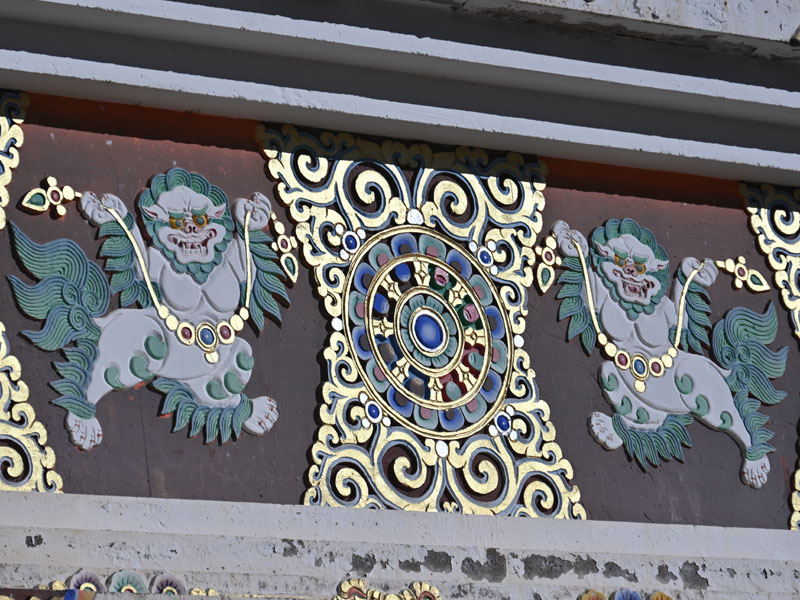
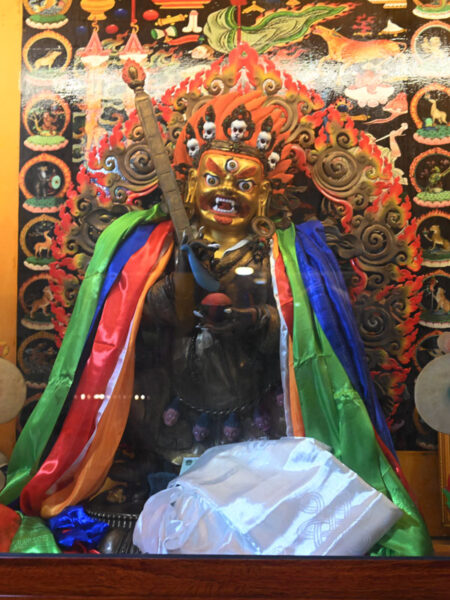
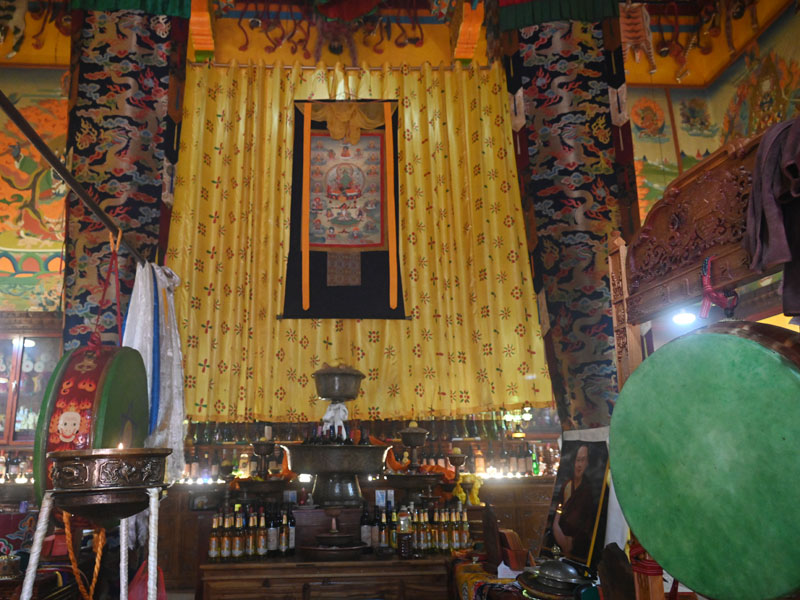
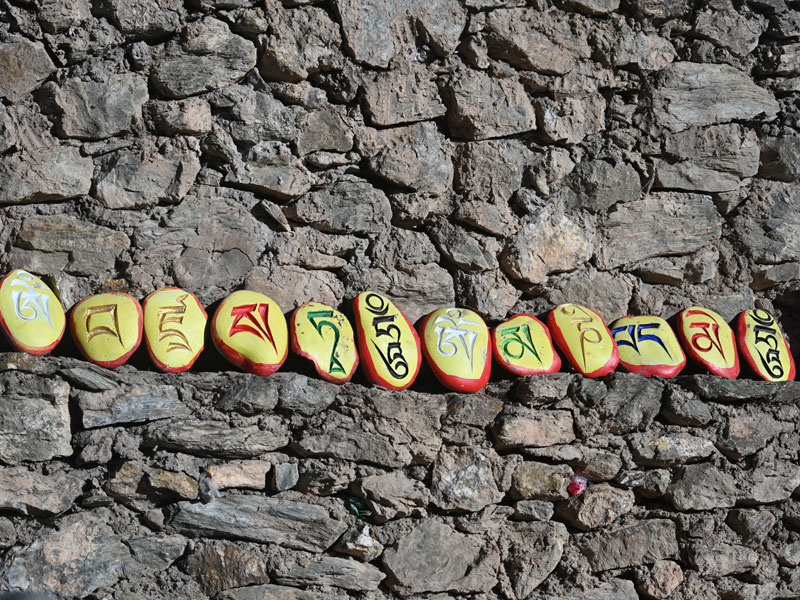
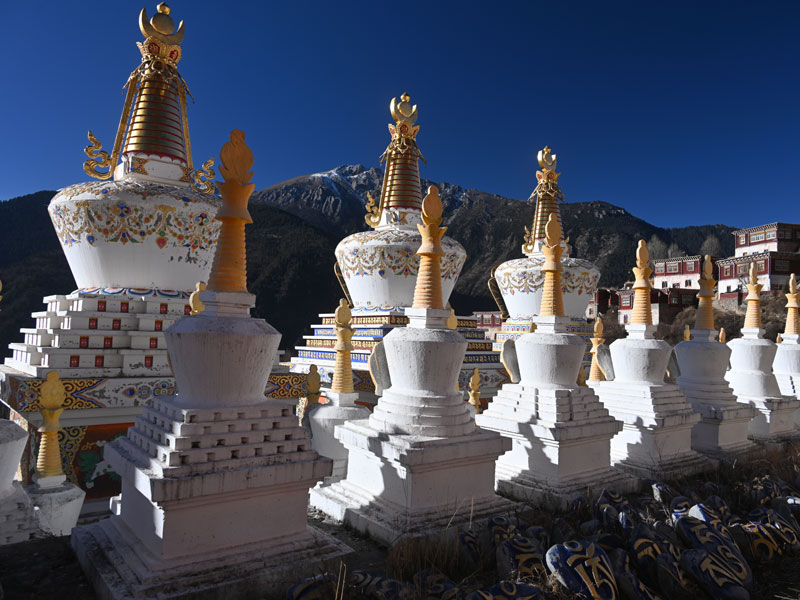

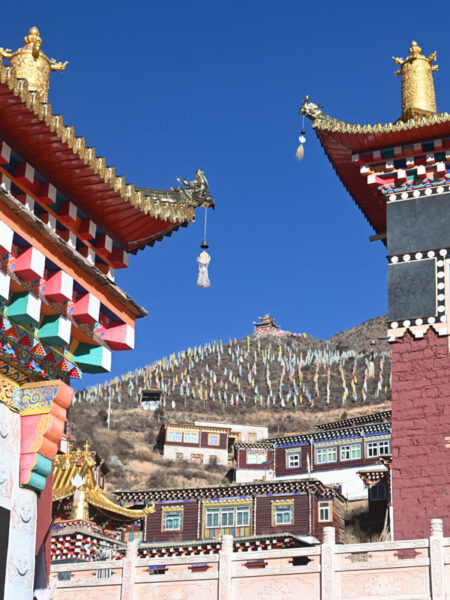
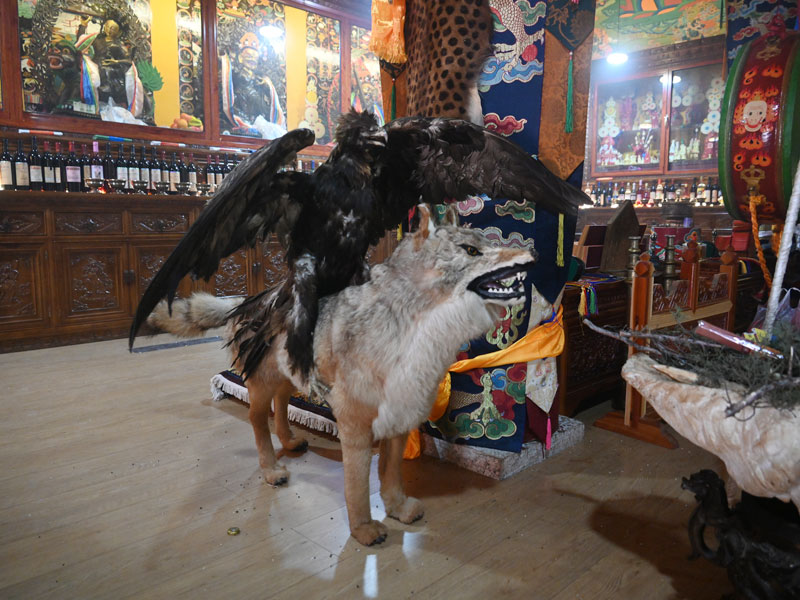
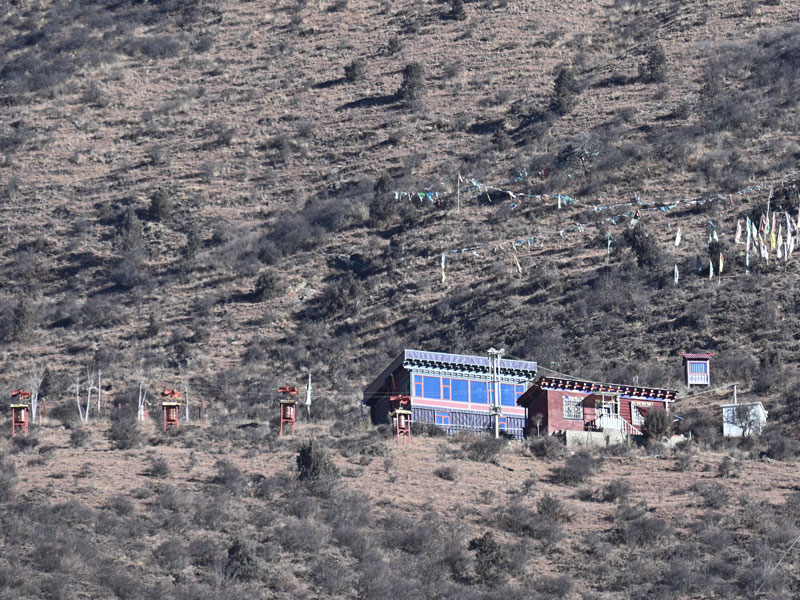
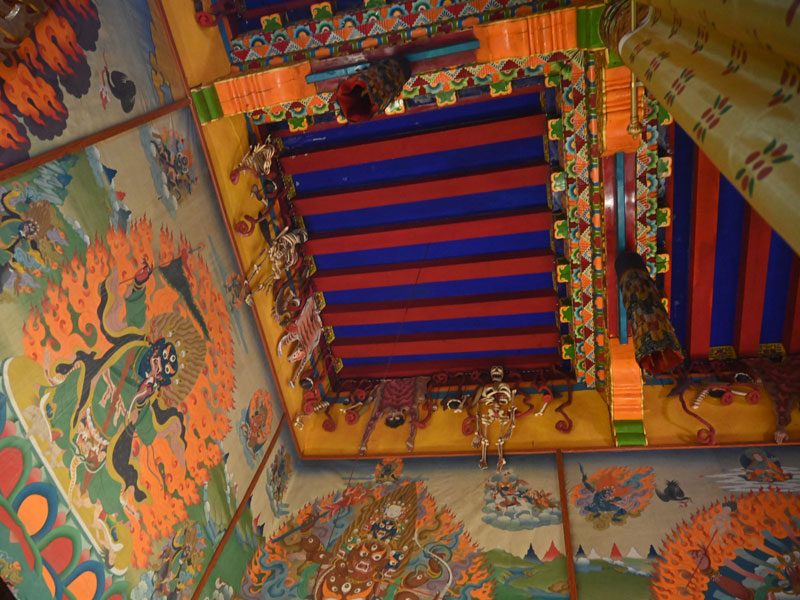
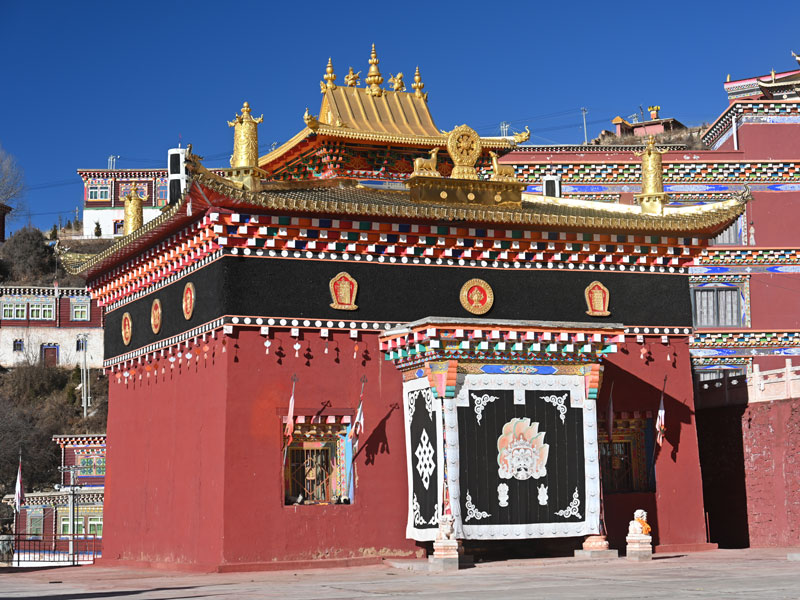
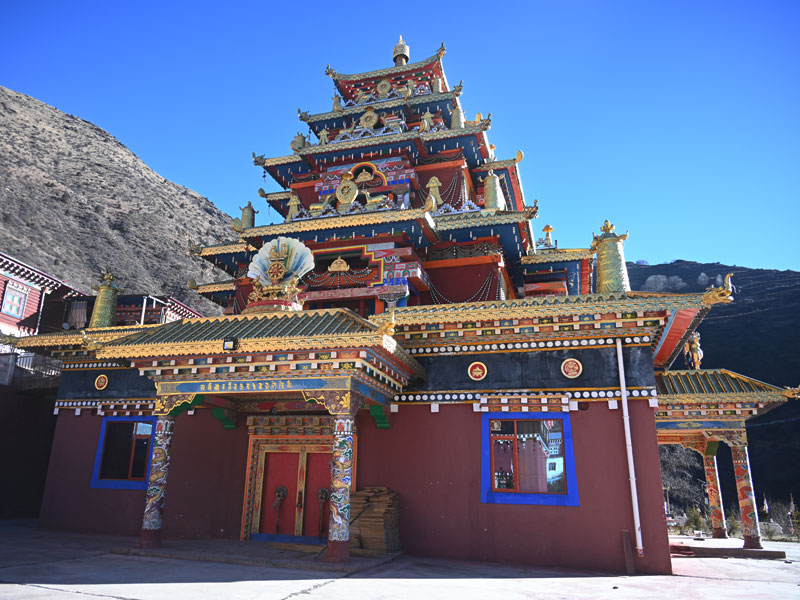
Chakra Legend of the Monastery’s Founding
Over 900 years ago, the Venerable Sherab Gyatso received teachings and engaged in spiritual practice under the guidance of the Venerable Tangpa Deshe, the founder of Kathok Monastery. Through his dedication, Sherab Gyatso attained both “common” and “uncommon” realizations and became one of Tangpa Deshe’s five principal disciples.
Tangpa Deshe once said to Sherab Gyatso:
“Now is the time for you to benefit sentient beings and spread the Dharma. You should go toward the direction of Dege. When you see a Dharma wheel appear in the sky with the syllable ‘E’ at its center, and on the ground an eight-petaled lotus with the syllable ‘waM’ appearing in its heart — and when these two merge together in the sky — that is the place where you are destined to build a monastery and propagate the Dharma.”
After a long and arduous journey, Sherab Gyatso arrived at a place where the surrounding peaks resembled the Eight Auspicious Symbols, the forests were lush, the springs were crystal clear, and birds gathered in harmony. At that moment, the vision described by Tangpa Deshe appeared in the sky.
Recognizing this as the destined site, Sherab Gyatso established Ewam Monastery (Chakra Monastery) there. The location is also believed to be the sacred mountain of the Dharma protector Dangjin Dorje Lingpa.
Dangjin Dorje Lingpa is considered one of the most powerful protectors within the Dzogchen tradition. For generations, the local people have passed down stories of the miraculous power of the protectors associated with Ewam Monastery.
Chakra Development and Lineage
Throughout its history, Ewam Monastery experienced both periods of prosperity and decline. After flourishing for a time, the monastery fell into decline, with the number of monks dwindling. It was during this period that a great figure emerged — Master Dangchin Jangchok. He studied at Palyul Monastery under the great tertön Gotsang Sherab, receiving the complete lineage of Palyul. He then revitalized Ewam Monastery, which from that point onward became an important branch of Palyul Monastery.
Historically, Ewam Monastery had five main assembly halls and was home to over a hundred resident high lamas. Countless accomplished masters emerged from here, including many who achieved the rainbow body. Among them were thirteen renowned masters such as Shiré Gyatso, Onchin Dorje, Zatsa Lama, Chipoma Gyentsen, and Tangpa Jangde.
It is said that every morning, these thirteen great masters would fly across the Jinsha River to practice on a sacred mountain in Tibet, returning to Ewam Monastery in the evening. Since local villagers did not have timekeeping tools at that time, they would wait to see the high lamas fly back before going home to prepare dinner.
The relic stupas of these thirteen great masters were preserved at Ewam Monastery, two of which were corporeal (containing their physical remains). Sadly, all of them were destroyed during the Cultural Revolution in the 1960s.
During that turbulent period, Ewam Monastery suffered extensive damage. Many high lamas were expelled and forced to take refuge in the mountains, where they could only practice the Dharma in secret at home.
Once religious freedom was restored, these high lamas returned to Ewam Monastery. Under the leadership of Pema Jangyong and Khenpo Pani Dorje, they began teaching the Dharma again amidst the ruins, gradually training new monks and rebuilding the monastery.
In 1994, Zewang Rinpoche, at the age of 21, completed his studies at Palyul Monastery. He was recognized by Penor Rinpoche as the reincarnation of Chiwong Tulku. Upon returning to Ewam Monastery, he was enthroned in a ceremony led by Tutsong Rinpoche. Taking charge of the monastery’s restoration, Zewang Rinpoche led the monks and devotees in tremendous efforts to rebuild.
They reconstructed the mountain paths connecting the monastery to surrounding villages, built the main assembly hall and auspicious stupas, crafted new statues, painted thangkas, and established a retreat center. There, monks began undertaking the traditional “three years, three months, and three days” retreat, as well as shorter intensive retreats.
To ensure younger monks received a proper education, Zewang Rinpoche also founded the Ewam Monastic Institute, inviting qualified teachers to provide systematic education for the young monastics.
In daily life, monks at Ewam Monastery gather in the main hall each morning and evening for prayer sessions and also recite scriptures in the protector shrine.
The protector shrine of Ewam Monastery houses deities such as Gambo Mani, Egang Zade, Tangje Lepa, Rehula, Nine Ma, Bobo Dorje Yane, mountain protectors, and wealth deities.
About ten monks are designated to perform daily rituals — in the mornings, they offer fire pujas and chant prayers for the Wealth Deity, Tara, Long Life, and Auspiciousness; in the afternoons, they recite protector prayers. These rituals are dedicated to the peace and prosperity of the nation, favorable weather, and the well-being of all. They also offer blessings to the lay supporters who contributed to rebuilding the monastery, praying for their success, peace, and good fortune in all endeavors.



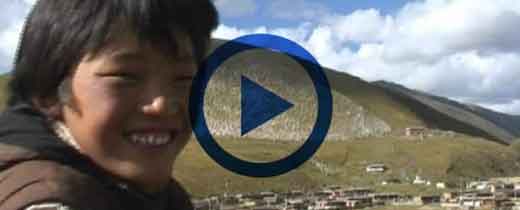

Leave a Reply